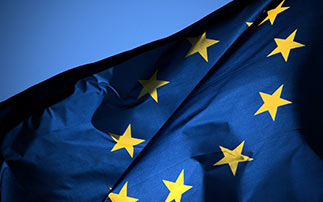Apart from structural and investment funds such as ESF+, ERDF or EAFRD, the European Union offers a multitude of other European funding tools. Among them, the sectoral or thematic European programmes are, as their name indicates, organised by topics and cover all the fields of intervention of the European Union except from the economic, social, and territorial cohesion policy and the common agricultural policy. They are voted by the European Parliament and managed by the European Commission or its executive agencies through regular calls for projects to address the EU’s major challenges.
How do European thematic programmes work?
Implemented through calls for proposals, European thematic programmes are open to all 27 EU Member States and cover a wide range of topics, from digital to health to the environment. They provide effective support for projects carried out by a wide range of European public and private actors such as institutions, companies or associations. The calls for projects are generally annual and each one recalls the general objectives of the programme by defining the eligibility criteria, the co-financed type of actions, the projects duration , the funding amount as well as the useful contacts.
As a direct interlocutor for project leaders, the European Commission, sometimes through its executive agencies, selects the best projects to be funded, taking into account the purpose of the programme, the nature of the project, its geographical location and its partnerships.
What do I need to know before applying for funding under a European thematic programme?
European thematic programmes have a number of common features relating to the different types of projects and co-financed expenditure that are important to know. First of all, these programmes finance projects with a European added value, i.e. which are innovative and can be replicated in other Member States. Secondly, they usually co-finance operating expenses such as personal costs. Finally, the thematic programmes mainly support projects structured around one or more European partnerships based in different Member States, even if some calls for applications may accept the absence of partnership or the presence of a local consortium.
In terms of funding modalities, almost all thematic programmes operate through calls for proposals. Financial support takes the form of grants and/or loans, loan guarantees or equity investments. Nevertheless, it should be noted that this funding is not subject to State aid rules and is selective. On the other hand, from a purely practical point of view, it should be noted that applications to calls for projects require a good level of English but also a careful preparation insofar as the projects are subjected to competition at European level and follow a strict timetable.
What are the different European thematic programmes?
As thematic programmes reflect the EU’s policy orientations, the list of areas targeted by them is very comprehensive. They cover research and innovation, technological competitiveness, environmental protection and climate change, support for organic farming, culture, lifelong learning, the fight against youth unemployment, sport, citizenship and transport. To meet the Union’s objectives in these areas, the European Parliament and the European Commission have launched numerous specific programmes for each theme. The best known are Horizon Europe, the European Interconnection Facility (EIM or EFC), Erasmus+, LIFE and Creative Europe. For the 2021-2027 multiannual programme, new programmes have been created, including Digital Europe, the Innovation Fund and the Single Market Programme.
HORIZON EUROPE
Horizon Europe is the European Union’s framework programme for research and innovation for the new programming period. It is the largest thematic programme with a budget of almost €95.5 billion. This includes €5.4bn from NextGenerationEU to stimulate recovery and make the Union more resilient, and a further €4.5bn of reinforcement. This framework programme has an increase of around 30% compared to its counterpart for the 2014-2020 period, making it the most ambitious research and innovation programme in the world.
This programme is intended to give concrete expression to the EU’s desire to stand out in a context of strong international competition in the field of research. Its general objectives are to strengthen the EU’s scientific and technological bases, to stimulate its competitiveness and its industry, to give concrete expression to the EU’s strategic political priorities and to help respond to global issues. In addition, the programme aims to raise the EU’s profile in research and innovation, to provide it with the best talent through competitive funding, and to give it the resources it needs to tackle today’s global challenges. One of the major novelties of the programme compared to its predecessor is the presence of research and innovation ‘missions’ aimed at generating solutions around major contemporary challenges such as climate change adaptation, ocean protection, the fight against cancer, carbon-neutral cities or soil health.
As with its predecessor, the programme is based on four pillars, including excellent science, global issues and European industrial competitiveness, a more innovative and competitive Europe, and the strengthening of the European Research Area. Similarly, the programme activities are carried out through open and competitive calls for applications.
The programme is open to research organisations, researchers, higher education actors, companies, public and governmental authorities, local and regional authorities, international or civil society organisations, associations, etc. The co-financing rate varies according to the call for proposals and is generally between 70% and 100% of eligible costs.
The Interconnection Facility for Europe (EIM-CEF)
The Interconnection Facility for Europe (EIM), also known as the Connecting Europe Facility (CEF), is the European Union’s main programme for supporting European infrastructure projects of common interest in the fields of transport, energy and telecommunications. Its objective is to support the development of high-performance, sustainable and efficiently interconnected trans-European networks for transport, energy and digital services. Through the deployment of these major networks, the European Interconnection Facility aims to complete the internal market, ensure sustainable development, master space, enhance security and develop international cooperation.
The programme has a budget of 33.7 billion euros for the new period, including 37.5 billion euros for transport, 1.1 billion for telecommunications and 5.8 billion euros for energy. This envelope is distributed on the basis of calls for projects with co-financing rates ranging from 30% to 75%.
The European Interconnection Facility is open to Member States, international organisations, companies and other public or private bodies, i.e. if the project leader is different from the Member State, it must obtain the agreement of the latter in order to be able to present its project.
Erasmus+ programme
The Erasmus+ programme, formerly known as Erasmus, is the European programme dedicated to education, training, youth and sport. It aims to give students, trainees, pupils from primary to secondary school, apprentices, teachers, trainers, staff, job seekers and those involved in the world of sport the opportunity to study or work abroad to enhance their knowledge, skills and employability. But in addition to the international mobility projects for which the programme is renowned, Erasmus+ can also support a wide range of projects in the field of formal and non-formal education and training. For example, the programme can help organisations to work in European or international partnerships between higher education institutions or vocational education and training providers.
For the period 2021-2027, Erasmus+ is even more open and inclusive, as it now promotes the participation of people with fewer opportunities. The programme also acts more responsibly by promoting low-carbon mobility and supporting the digital transition of education through hybrid projects. For this new period, the programme has a budget of €26.5 billion. The co-financing rate also varies according to each project, although it is generally between 70% and 100% of eligible expenditure.
LIFE
The LIFE programme is the EU’s financial instrument for supporting innovative public or private projects in the environment and climate fields. It is the only EU funding programme dedicated exclusively to the environment. The LIFE programme is the EU’s financial instrument for supporting innovative public and private projects in the environmental and climate fields. It is the only EU funding programme devoted exclusively to the environment. The main objectives of the programme are to:
- To support the transition to a sustainable, circular, renewable energy, carbon-neutral and resilient economy;
- To participate in the protection and restoration of the environment;
- To slow down and reverse the loss of biodiversity;
- Stop the degradation of ecosystems by improving the Natura 2000 network;
- Encourage green ideas for businesses, NGOs, public authorities, citizens’ groups, academia, and others.
The LIFE programme can work with all types of project promoters, whether public or private. Its vocation is to promote and finance innovative projects including the conservation of species and inhabitants, soil protection, the improvement of air and water quality, waste management, the implementation of agri-environmental and climatic measures or the protection of areas subject to extreme natural constraints.
Under the new programming period, LIFE will have a budget of €5.4 billion at European level and its co-financing rate is mainly around 60% of total eligible costs.
Europe Creative
The Europe Creative programme is the European Union’s programme to support the fields of culture and creativity as well as audiovisual. Its main objective is to encourage cultural diversity and its competitiveness through innovative projects but also cooperation between European structures. In the new programming period, the programme contributes to the revival of the creative and cultural spheres through more inclusive, digital and environmentally sustainable actions.
Creative Europe is divided into three strands:
- The Culture strand aims to revive the cultural and creative sector weakened by the crisis, to improve artistic and cultural cooperation at European level and to strengthen the economic, social, and external dimensions in Europe;
- The Media strand aims to promote cooperation, innovation and sustainability, including mobility, in the European audio-visual sector;
- The cross-sectoral strand aims to promote innovative and collaborative cross-sectoral actions as well as a diverse, independent and pluralistic media environment and media literacy.
It should be noted that the programme is open to all actors, public or private, profit-making or not, such as producers, distributors, sales agents, education and training organisations, research centres, companies, cultural organisations, associations, etc. Its budget for the new period is 2.44 billion euros, while its co-financing rate varies between 50% and 80% depending on the project.


